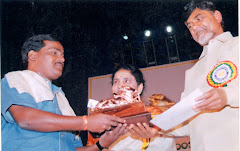Act structure for films.
Act structure explains how a plot of a film story is composed. Just like plays (Staged drama) have 'Acts', critics and screenwriters tend to divide films into acts; though films don't require to be broken down as such in reality.
Whereas plays are actual live performances that need 'breaks' in the middle for change of set, costume, or for the artists' rest; films are recorded performances shown mechanically and therefore don't need actual breaks. Still they are divided into acts for reasons that are in aesthetic and structural conformation with the original idea of Act in theatre. Act breaks in a film are usually very obscure for lay audience and only a trained person can detect the ending of one act and the beginning of the other in the progression of a movie. The idea of Act structure is of more value while writing a Screenplay than watching a film, though the Act breaks are never actually written in the final copies of screenplays, however, in television scripts called Teleplays clear detonations as such are almost always included.
Act is the broadest structural unit of enacted stories. The most common paradigm in theatre, and so in films, is that of the 'Three-Act structure' proposed by Aristotle. It simply means that any story has a 'beginning', a 'middle' and an 'end'. Playwrights and screenwriters divide their stories into three major parts viz. 'Set up', 'Confrontation' (alternatively called as 'conflict' or 'complication') and 'Resolution'. These form the basic three acts of any performance- staged or screened.
Though various theories have been proposed and debated, the Three-act structure stands as the most popular one. Also, this is what Hollywood and Bollywood has discovered and proved as the most successful. The rest of the world cinema may have its own ways of looking at the plot.
The 'Three-Act structure'
According to Hollywood, feature films are considered as audio-visual narrative forms which can be seen in distinct parts called 'Acts'.
It follows that the enacted story opens with the introduction of characters and situations, backdrop, locale etc. It creates interest in the audience and takes them to feel concerned as to what the real problem is and what may happen with it. Plays, and screenplays, usually revolve around main characters- the 'Protagonist' and the 'Antagonist' who engage themselevs into a battle. That is "Set up".
The next part- and considered to be more important- is complication of the problem of the story. It intrigues the audience all the more, giving them more and more information and putting vaious points of view for imaginative comparison. This eventually leads to higher points of audience interest. Because this second Act of most screenplays adds all the possible dramatic values to the plot, this is considered to be the core of the same. The Antagonist and the Protagonist try and experiment with all their strengths (and weaknesses of the other) to win the battle. That is "Confrontation".
This takes us to the third- and the most important- act, the "Resolution". This means it tends to 'solve' the problem (-s) of the story developed so far. But this is not obvious, as it is expected to bring the 'climax' (or a series of climaxes) to give the audience the pay-off. The tool usually implemented is a 'do or die' situation where doors of escape for either or both of the two characters go on closing one by one, leaving them with only a thin chance that demands the fullest exploitation of their qualities and energies. This so called jaw-dropping, breath-taking, arm-rest-grabbing moment for the audience leads to the final outcome of the entire plot. And it is usually the triumph of the good (Protagonist) over the evil (Antagonist), with rare exceptions.
Srivenkat Bulemoni.
Subscribe to:
Post Comments (Atom)









2 comments:
In United States of Amerika Mr Syd Feild is a master for screenplay guru. In india i feel you are the screen guru.Thank you sir, you gave lot of information for upcomers. Thanks once again.
Good information. Kindly give regularly.
Post a Comment